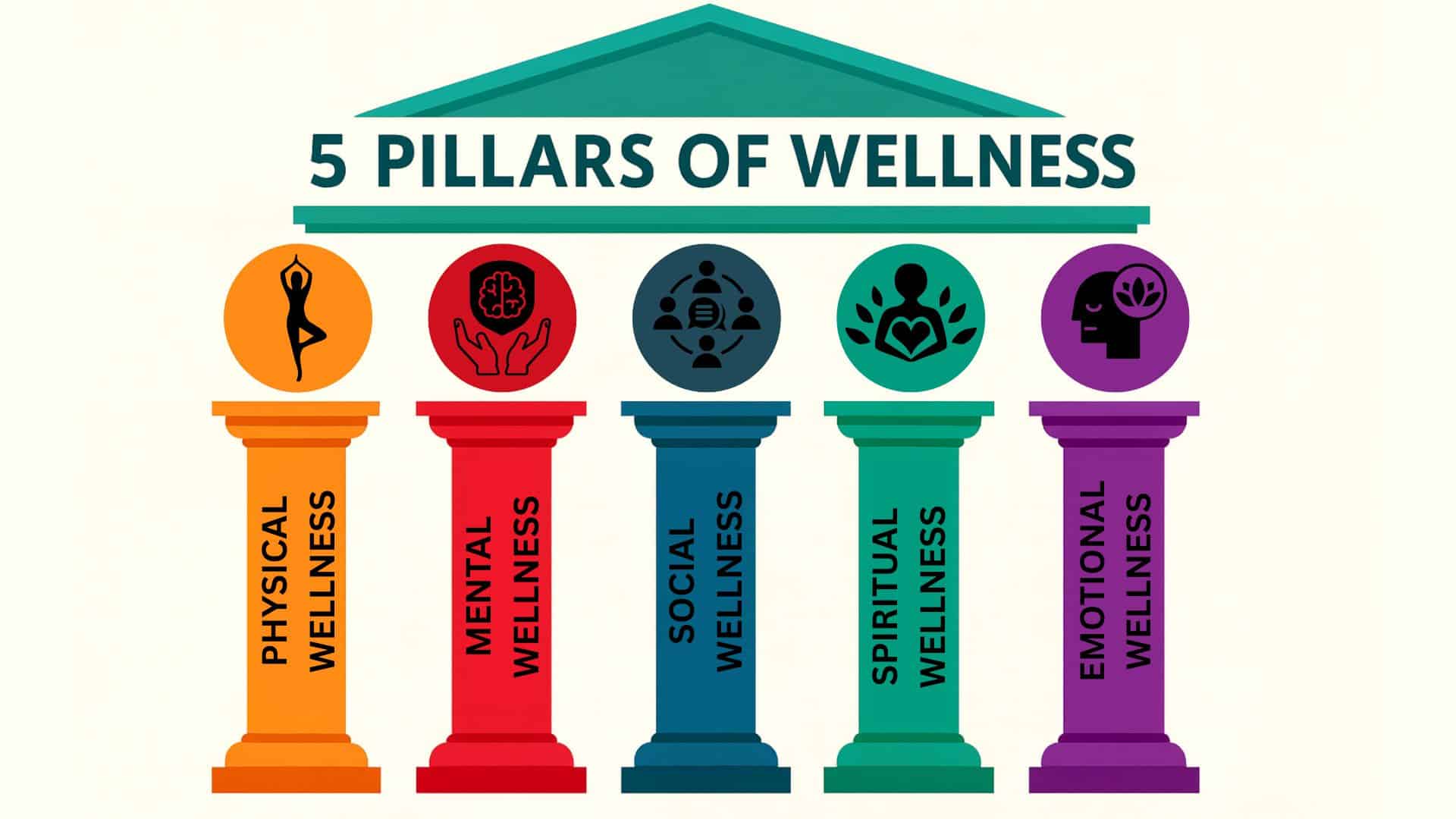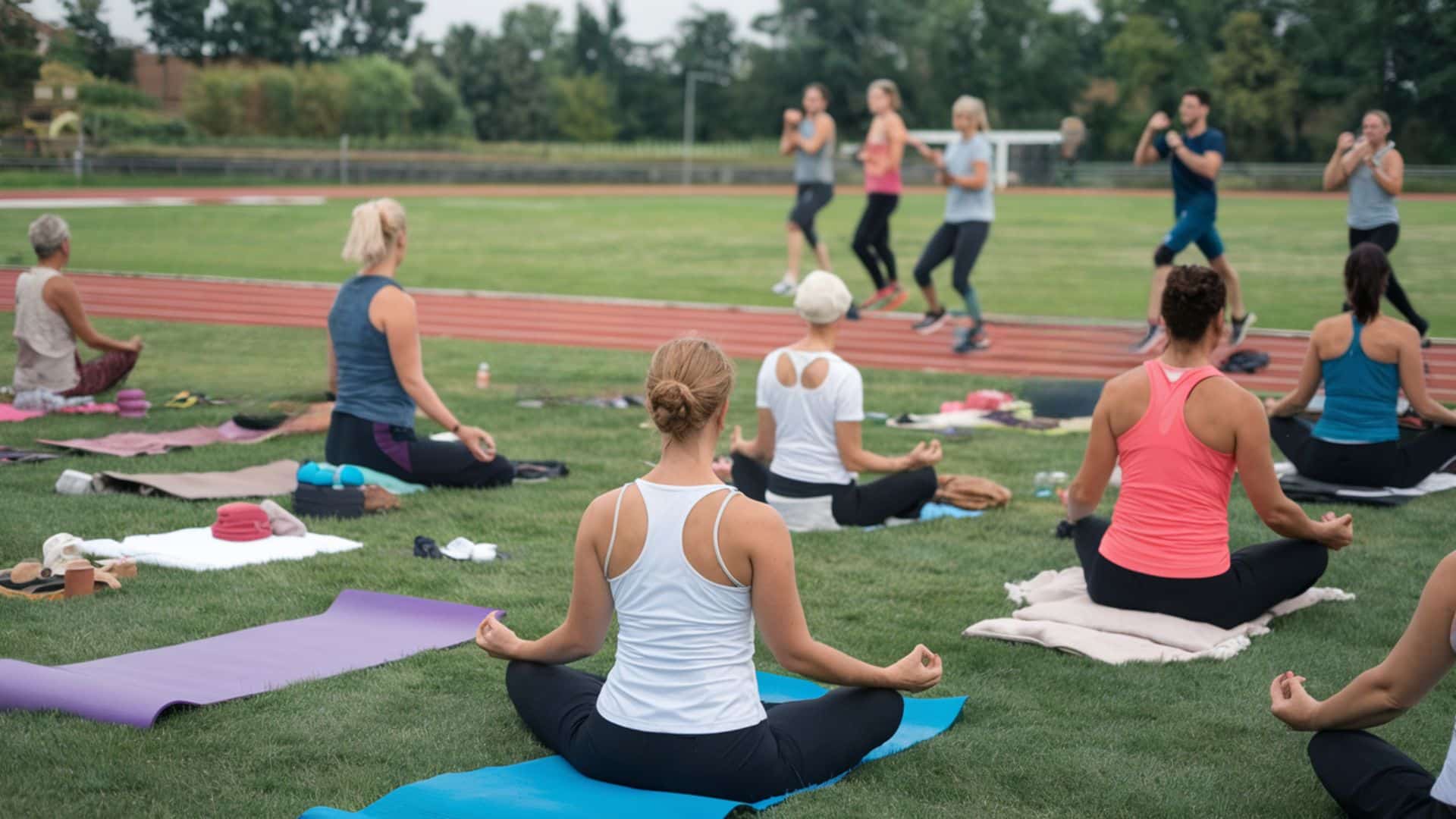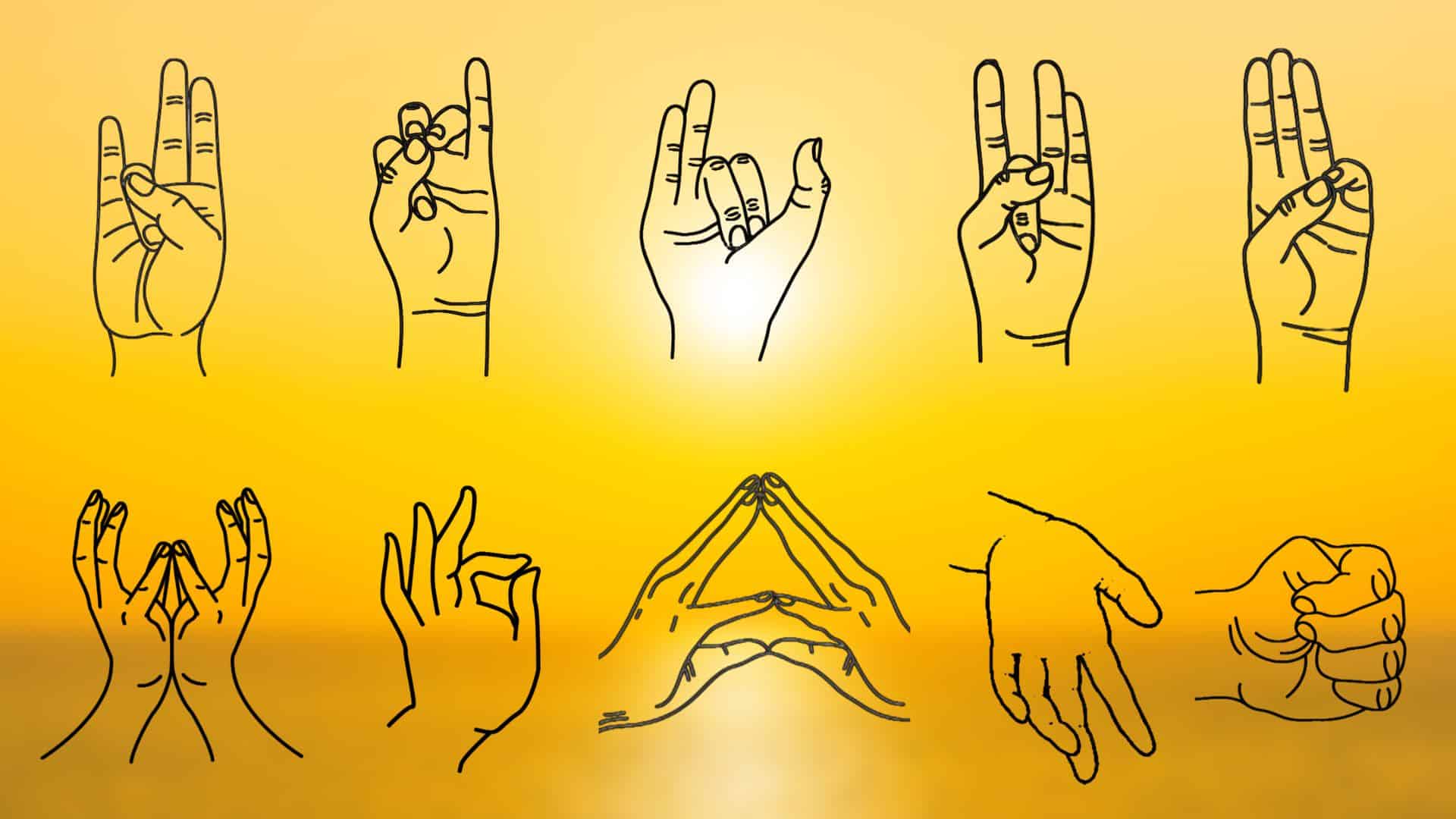Ever feel like you’re juggling too many health goals at once? You’re not alone. The secret to sustainable wellness isn’t about perfection; it’s about balance.
That’s where the concept of pillars of wellness comes in.
Think of these pillars as the supporting beams of a house. When all pillars are strong, your overall health flourishes. When one weakens, others compensate, but the whole structure becomes vulnerable.
Different wellness experts propose various models; some focus on four basic pillars, while others expand to eight comprehensive areas.
What makes this approach powerful is its flexibility. You can strengthen one pillar while maintaining others, creating a personalized path to better health.
Throughout this guide, we’ll explore different pillar frameworks, examine why yoga and exercise serve as universal foundations, and help you find the right wellness program for your needs.
Understanding Pillars of Wellness Models

The 5 pillars of wellness have become the gold standard for balanced health approaches.
This framework strikes the perfect balance between being comprehensive enough to address all major health areas while remaining simple enough to implement in daily life.
The 5 Pillars of Wellness form the foundation of most successful wellness programs. Let’s break down each pillar:
Pillar 1: Physical Wellness
Encompasses any physical activity that gets your body moving. This doesn’t mean grueling gym sessions – walking, dancing, yoga, or even gardening count.
Regular movement boosts cardiovascular health, strengthens muscles, and releases mood-enhancing endorphins. It also includes proper nutrition, hydration, and adequate rest for your body’s recovery.
Pillar 2: Mental Wellness
Focuses on maintaining cognitive health and psychological resilience. This pillar encompasses activities that keep your mind sharp, such as reading, solving puzzles, acquiring new skills, and engaging in intellectually stimulating conversations.
Mental wellness also involves developing healthy thought patterns, managing stress effectively, and building emotional intelligence to navigate life’s challenges.
Pillar 3: Social Wellness
Recognizes that humans are inherently social beings. Strong relationships offer emotional support, reduce stress, and contribute to overall well-being and longevity.
This includes family, friends, community groups, or professional networks. Social wellness involves building meaningful connections, communicating effectively, and maintaining healthy boundaries in relationships.
Pillar 4: Spiritual Wellness
Involves connecting with experiences and practices that provide a sense of purpose, meaning, and connection to something greater than yourself.
This doesn’t necessarily mean religion – it could be meditation, time in nature, prayer, or creative expression. Spiritual practices help reduce stress, enhance self-awareness, and promote inner peace and resilience during challenging times.
Pillar 5: Emotional Wellness
Centers on your ability to understand, express, and manage your feelings in healthy ways. This includes developing emotional intelligence, practicing self-compassion, and learning effective coping strategies for difficult emotions.
Emotional wellness involves being present with your feelings, managing stress through mindfulness techniques like meditation or deep breathing, and maintaining a positive outlook on life.
Other Wellness Models exist, but are less comprehensive. Some approaches focus on physical health alone, missing crucial mental and emotional components.
Extended models (6-8 pillars) incorporate elements such as financial wellness, environmental health, or occupational satisfaction.
However, the 5 pillars of wellness remain most popular because they address all essential health areas without being overly complex.
Comparing Different Wellness Frameworks
Understanding how different models approach wellness helps you select the most suitable framework for your specific needs and circumstances.
| Model | Focus Areas | Yoga/Exercise Role |
|---|---|---|
| 5 Pillars | Physical, Emotional, Mental, Spiritual, Social | Yoga covers physical, mental, and social aspects simultaneously |
| 4 Pillars | Exercise, Nutrition, Relaxation, Sleep | Yoga combines exercise with relaxation practices |
| 6+ Pillars | Yogic lifestyle or holistic living | Yoga integrates breath, body, and mind as one comprehensive practice |
The 5-pillar model works well for most people because it’s comprehensive yet manageable. You can focus on strengthening one to two pillars at a time while maintaining the others.
The 4-pillar approach suits individuals who prefer simplicity or are dealing with health challenges that require focusing on the basics first. It’s also effective for workplace wellness programs that have limited time.
Extended models cater to individuals who are ready for a more profound lifestyle transformation. These frameworks recognize that true wellness encompasses not only personal habits but also environmental, financial, and occupational factors.
Yoga’s unique position across all models stems from its multifaceted nature. A single yoga session can provide physical exercise, stress relief, social interaction, and spiritual connection, addressing multiple pillars simultaneously.
How Yoga and Exercise Change Your Wellness Foundation?
Yoga stands out as a unique wellness tool because it naturally supports multiple pillars simultaneously.
Unlike traditional exercise that primarily targets physical health, yoga creates a ripple effect across your entire wellness foundation.
- Physical Benefits include improved flexibility, strength, and balance. Regular practice enhances cardiovascular health, supports immune function, and helps manage chronic pain. Even gentle yoga styles provide measurable physical improvements within weeks.
- Mental and emotional support flow naturally from yoga’s mindful movement approach. The combination of breath awareness and physical poses activates the parasympathetic nervous system, reducing stress hormones and promoting emotional regulation.
- Social Connection develops through group classes, teacher-student relationships, and shared experiences. Many practitioners find that their yoga community becomes a vital source of support and friendship.
- Spiritual Wellness emerges through practices that connect you with something greater than daily stress and routine. This doesn’t require religious belief; many people experience spiritual benefits through increased self-awareness and inner peace.
Daily movement doesn’t need to be intense. A 10-minute morning flow, afternoon breathing exercises, or evening restorative poses all contribute to your wellness foundation. The key is consistency over intensity.
Finding the Right Wellness Programs and Support

Quality wellness programs address multiple pillars rather than focusing on just one area. When evaluating options, look for approaches that integrate different aspects of health rather than isolating them.
1. Comprehensive Programs might combine yoga instruction with nutritional guidance, sleep hygiene education, and stress management techniques. These programs recognize that lasting change requires addressing interconnected health factors.
2. Yoga Therapy represents a specialized approach in which certified therapists utilize yogic tools to address specific health challenges. This might include customized breathing practices for anxiety, modified poses for injury recovery, or meditation techniques for chronic pain management.
3. Group Wellness Sessions offer the added benefit of social connection while addressing multiple aspects of wellness. Examples include walking groups that combine exercise with community, cooking classes that blend nutrition education with social interaction, or meditation circles that support both mindfulness and connection.
4. Hybrid Approaches increasingly combine traditional therapy with wellness practices. You might find counselors who incorporate mindfulness techniques, physical therapists who use yoga-based exercises, or nutritionists who address stress eating through mindfulness practices.
Bottom Line
The most effective wellness approach isn’t following someone else’s perfect plan; it’s creating a sustainable framework that fits your life and circumstances.
Pillars of wellness provide flexible frameworks for healthy living. The 5 pillars of wellness remain most popular because they strike a balance between comprehensiveness and simplicity, although other frameworks may better suit your specific needs.
Yoga and exercise serve as universal foundations regardless of your chosen model. They naturally support multiple wellness areas while providing measurable benefits quickly.
Consider exploring wellness programs and therapy services that align with your framework. Professional guidance helps implement these concepts effectively while avoiding common pitfalls that can derail good intentions.
Ready to strengthen your wellness foundation?
Assess which pillar needs attention now. Choose one small, sustainable weekly action supporting that area. Building lasting wellness is a journey; every small step matters.








